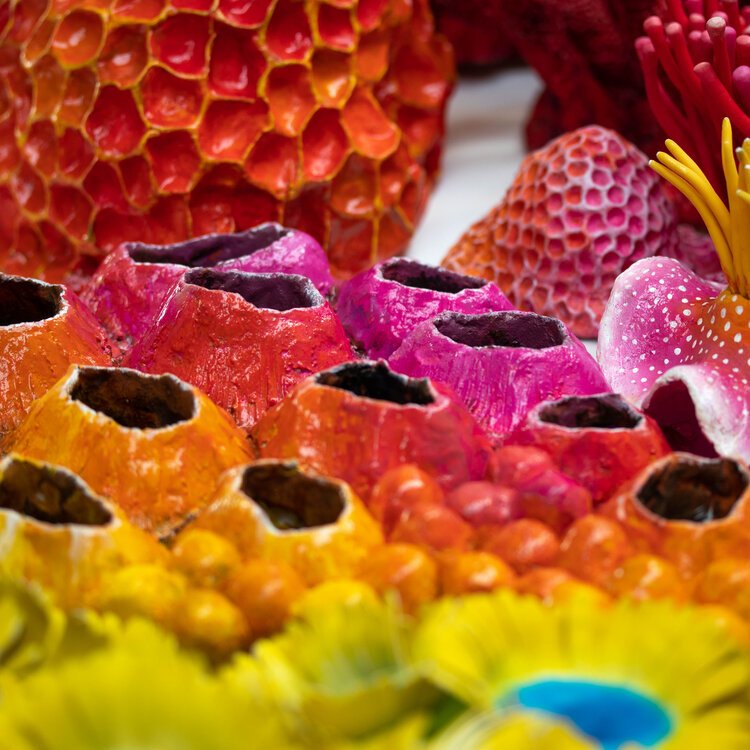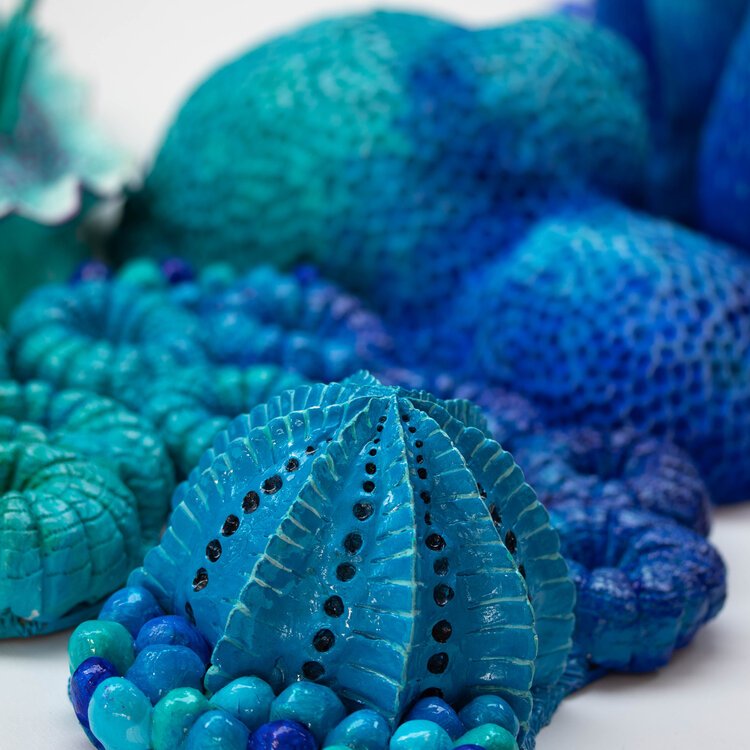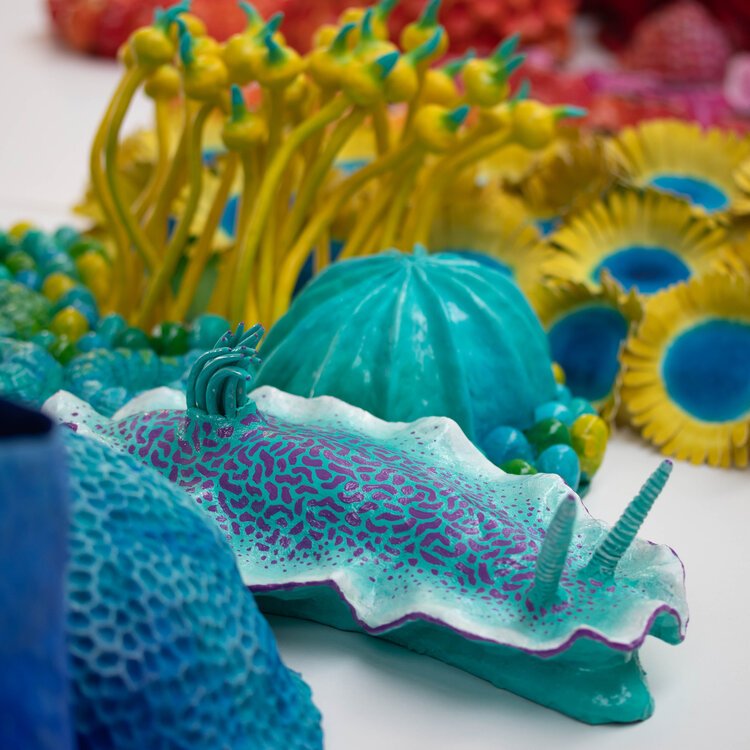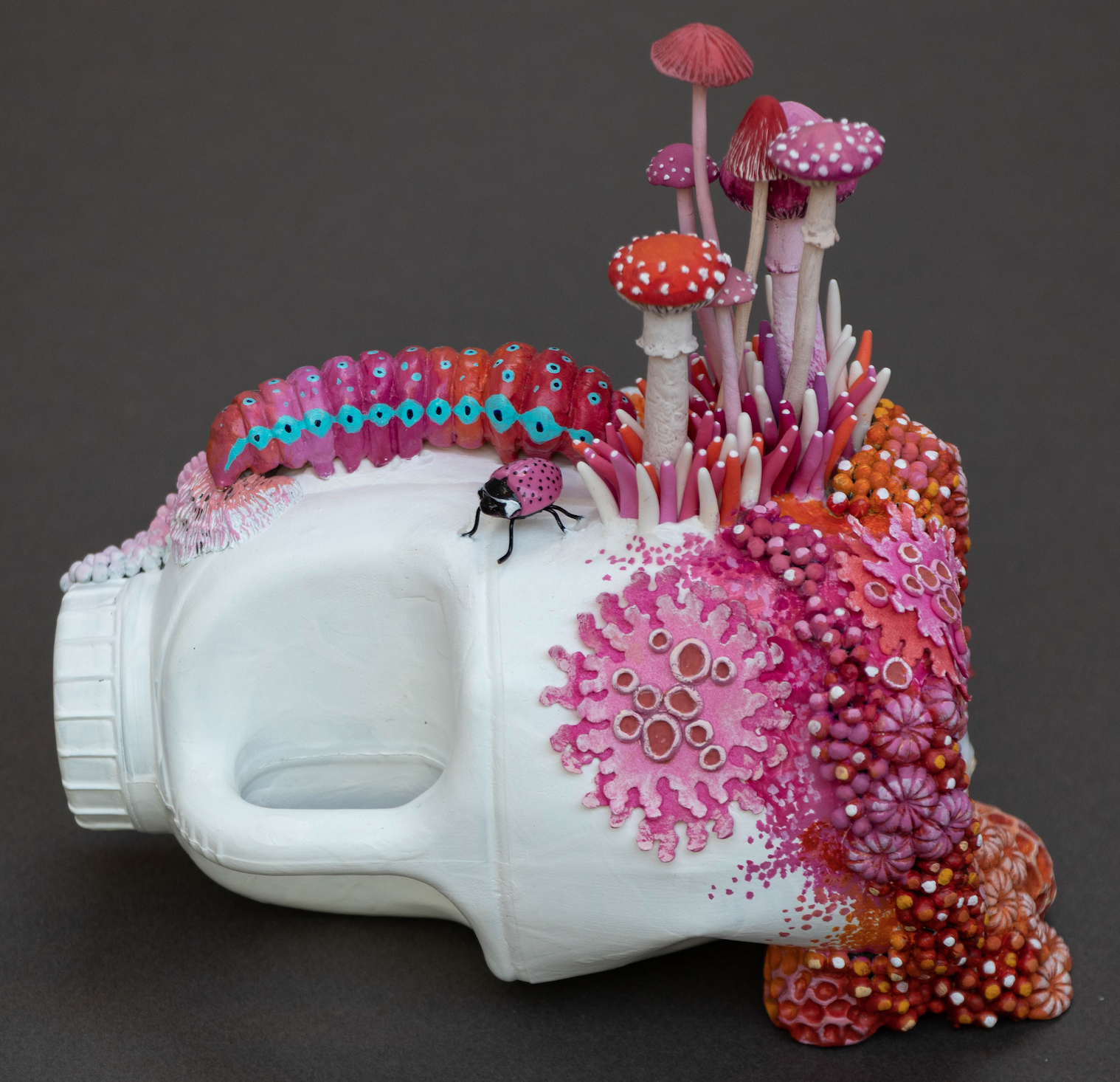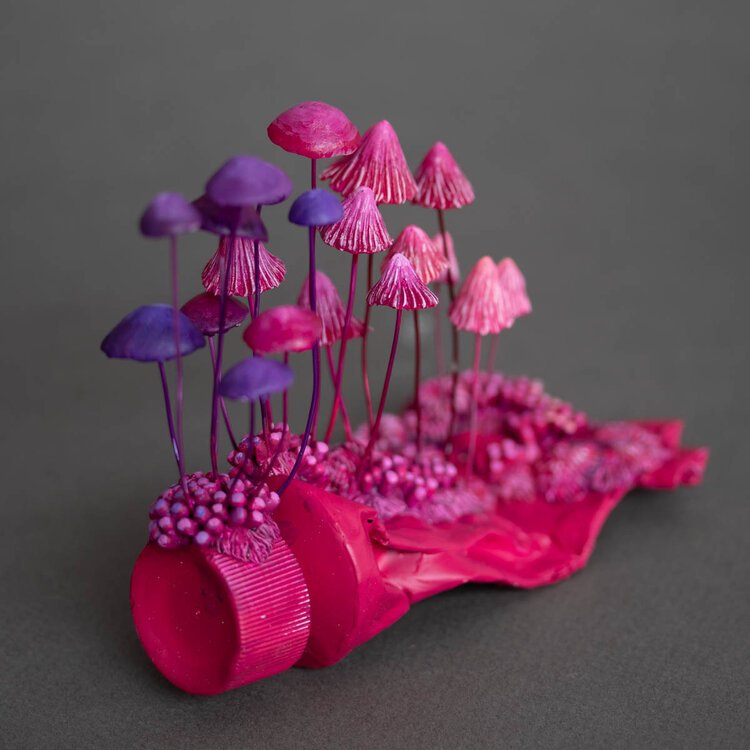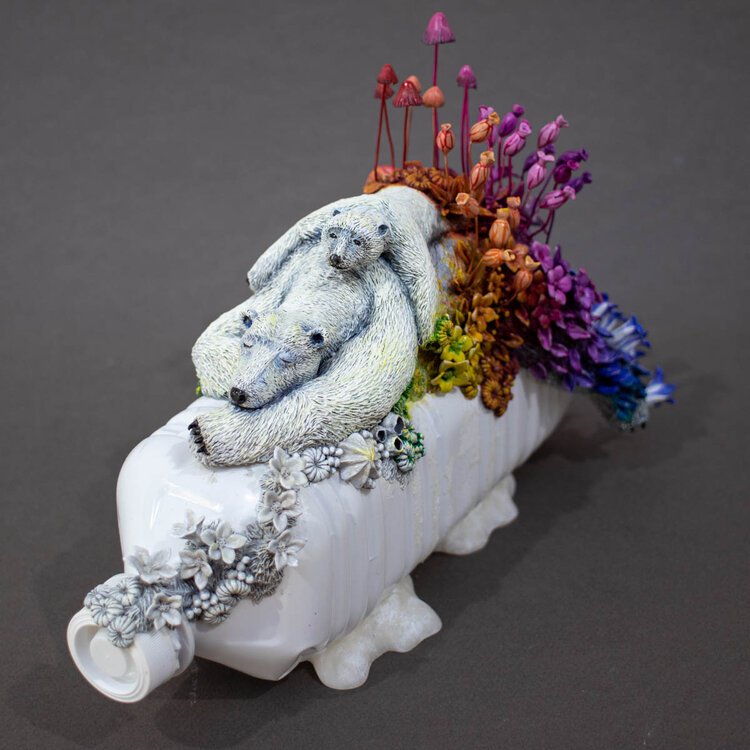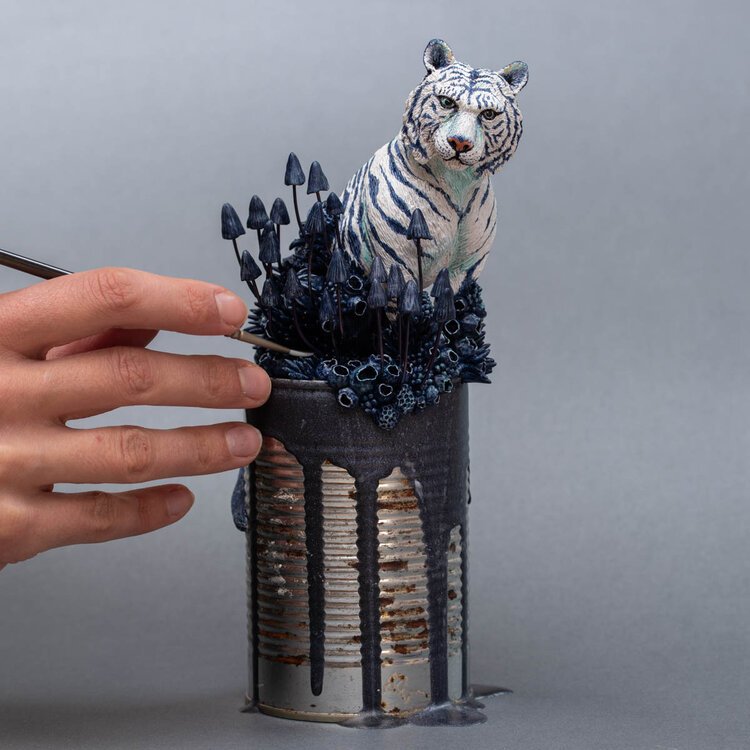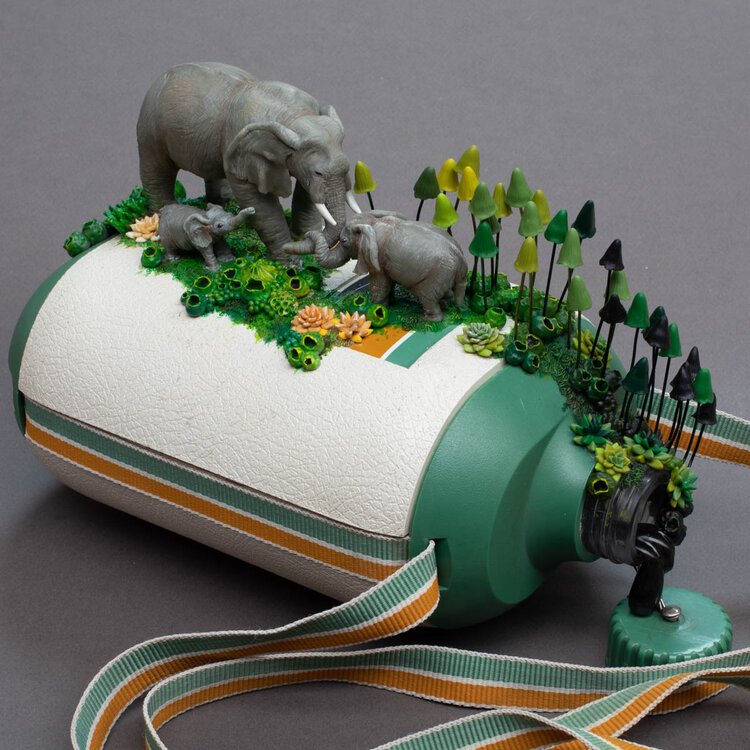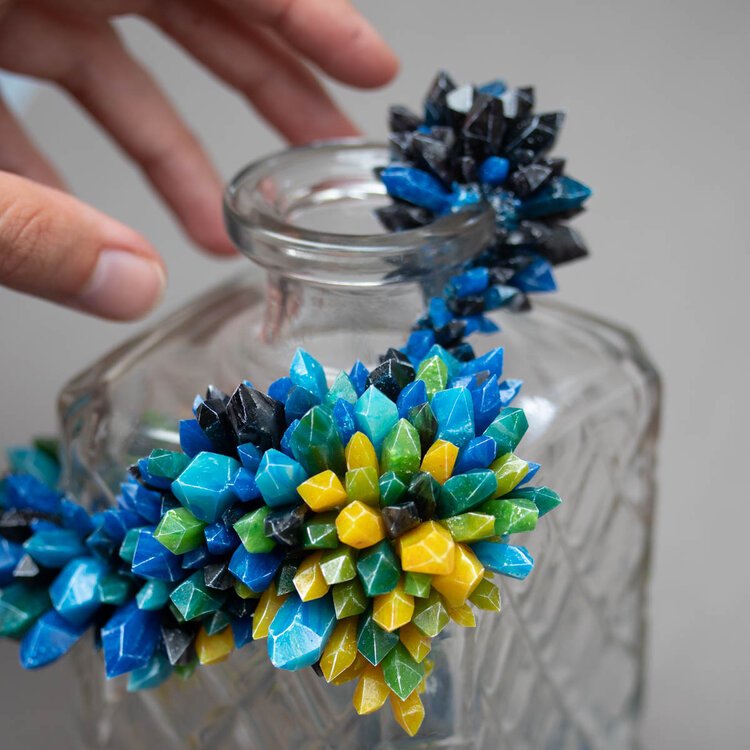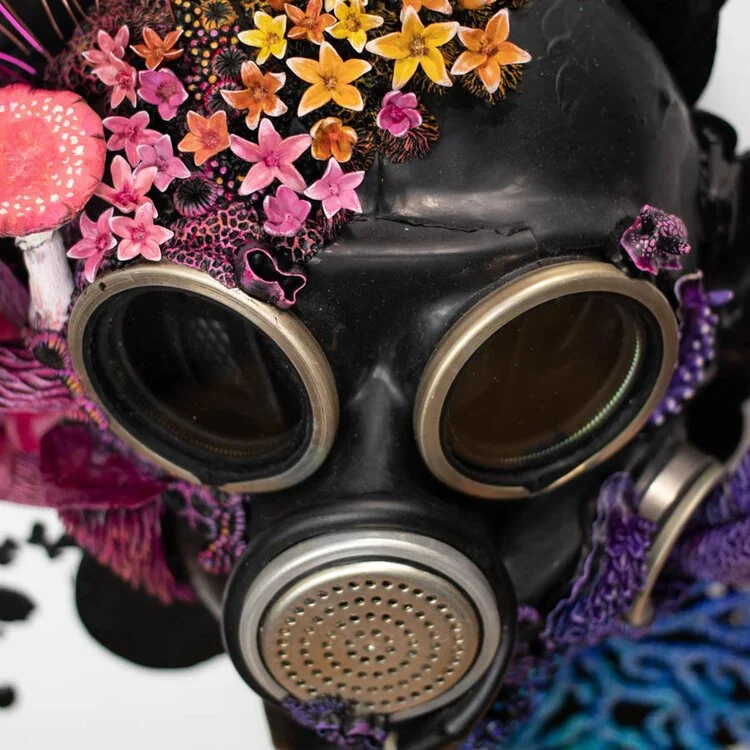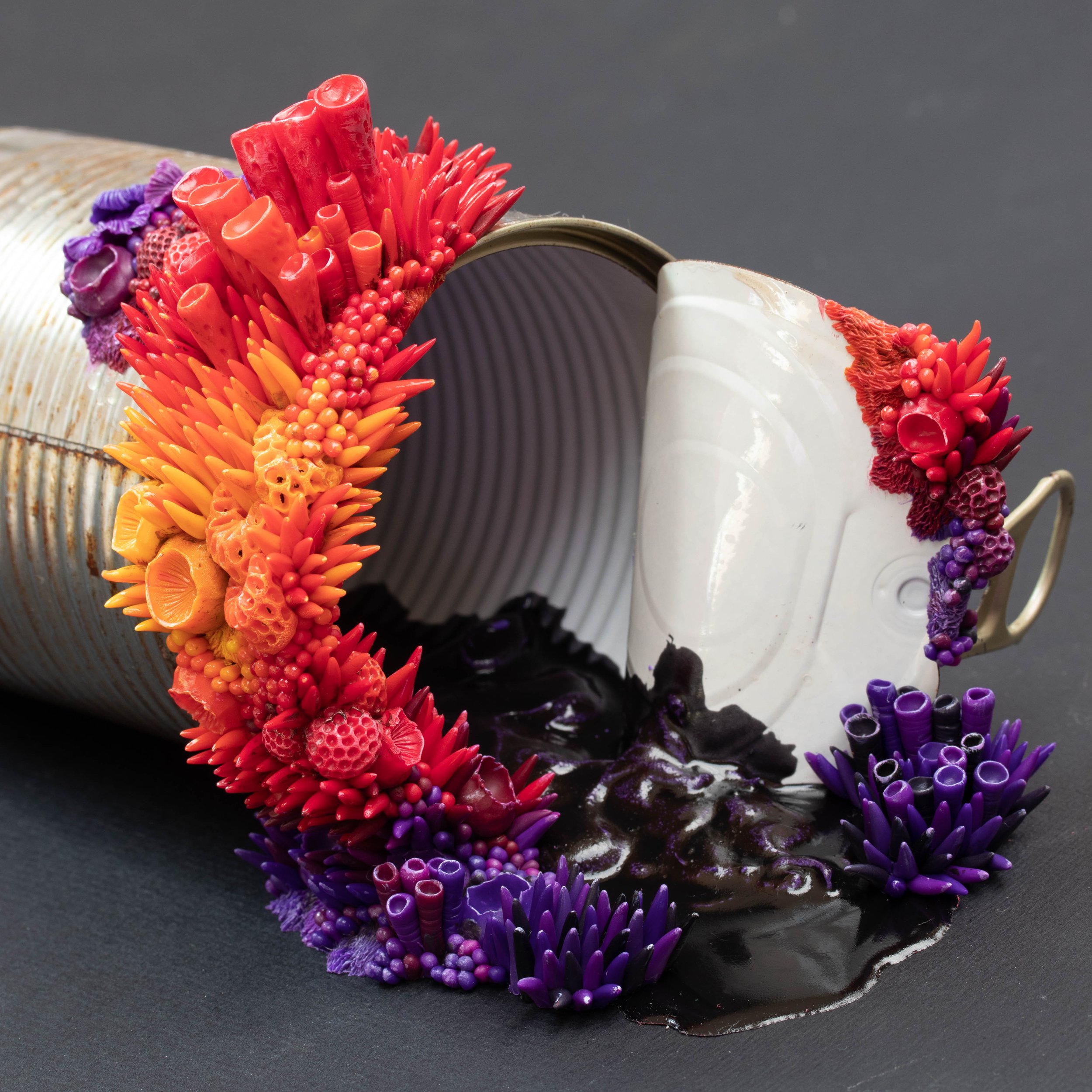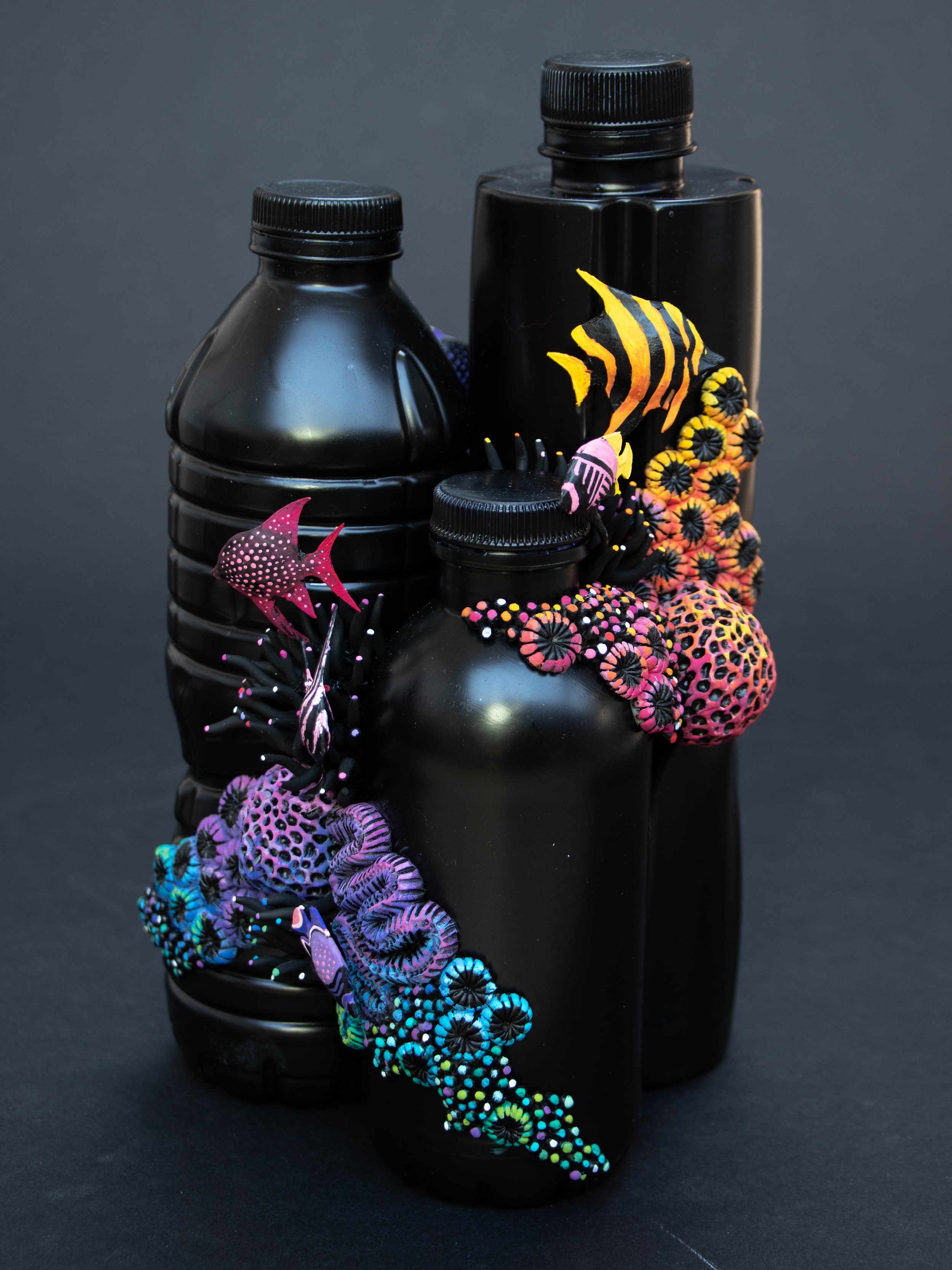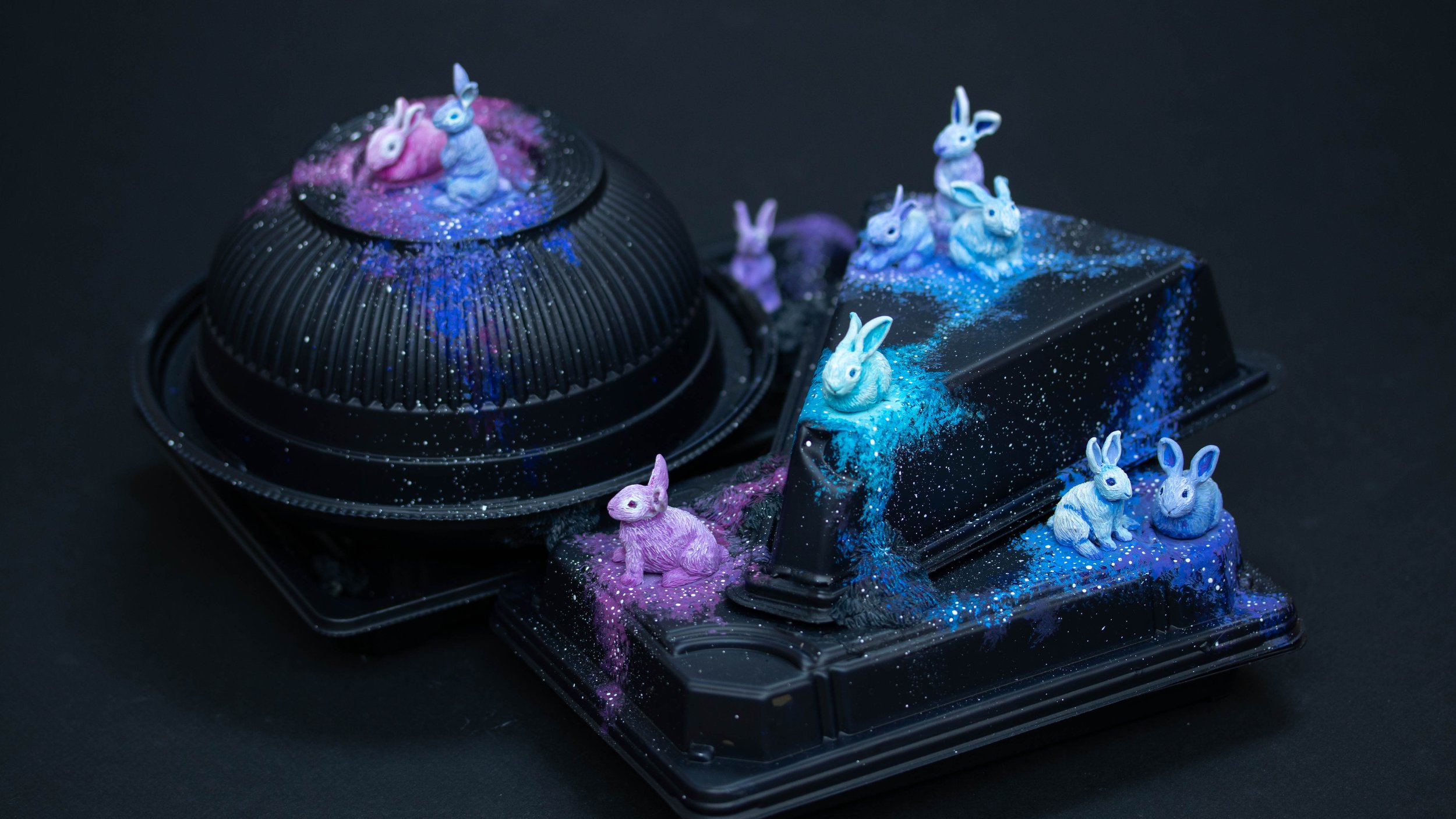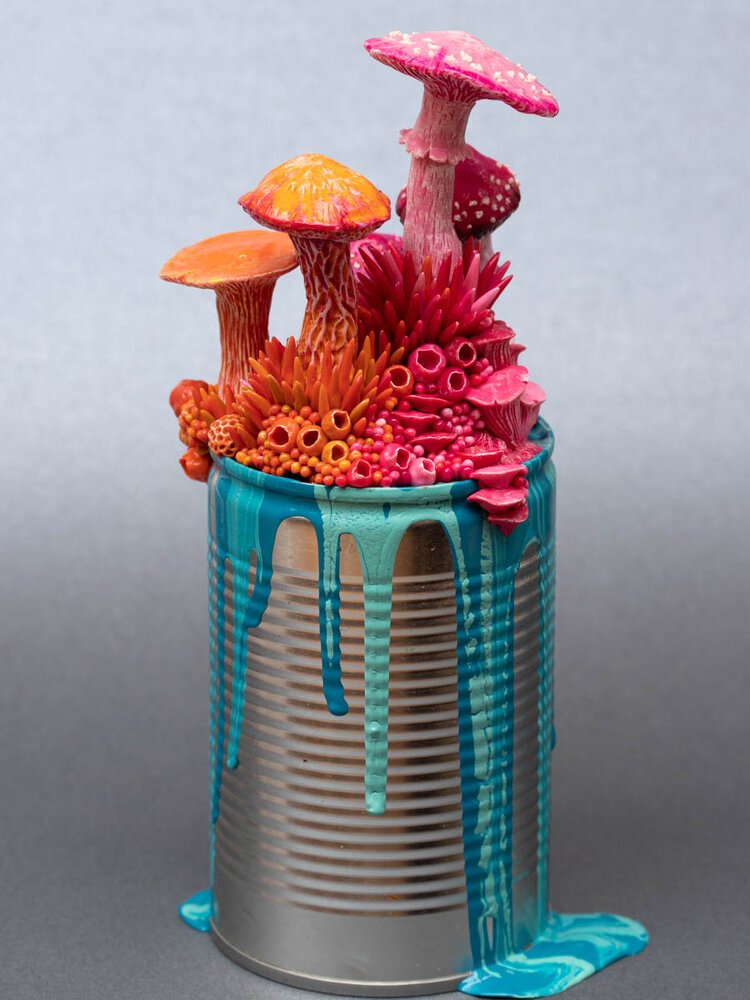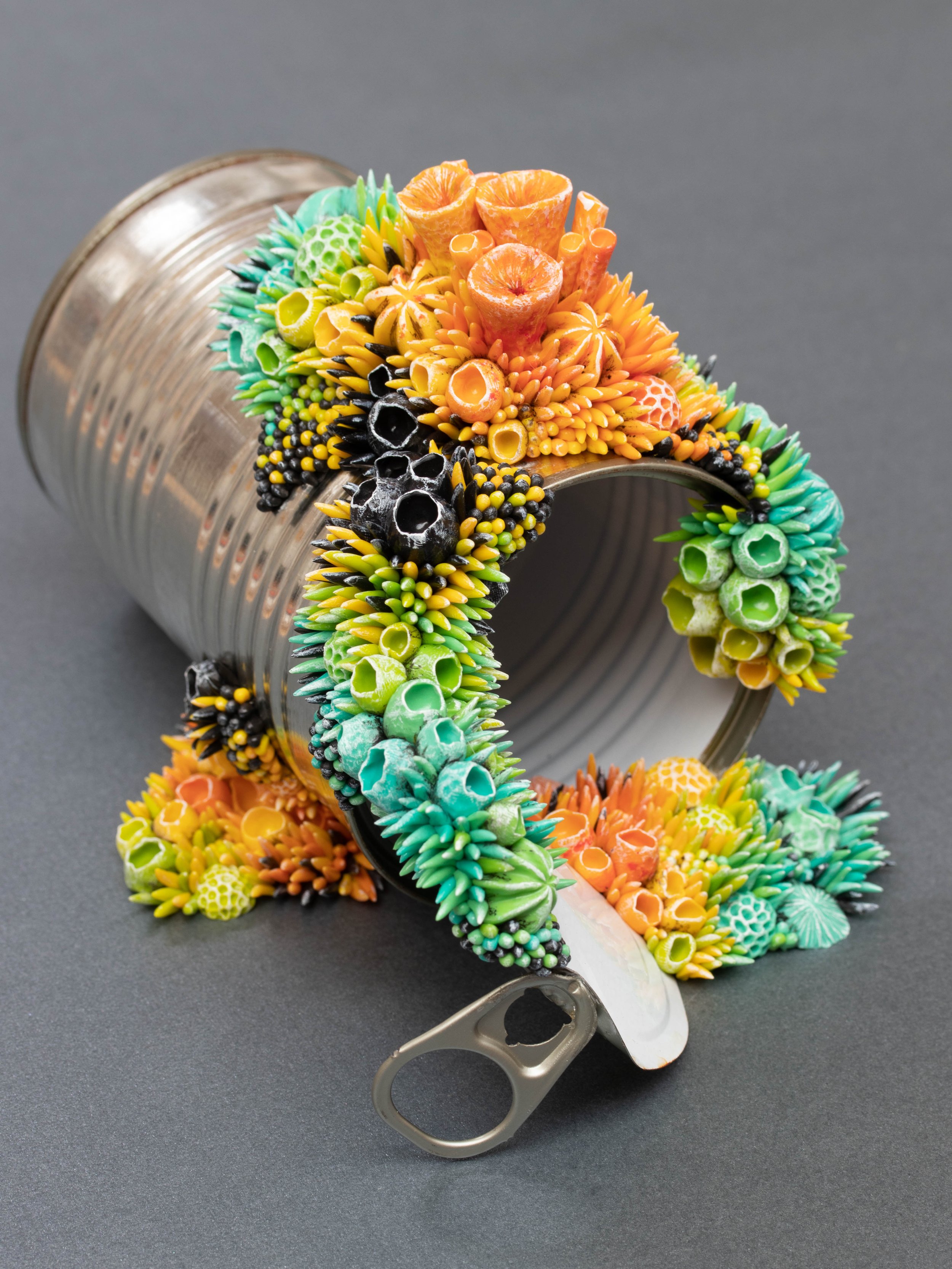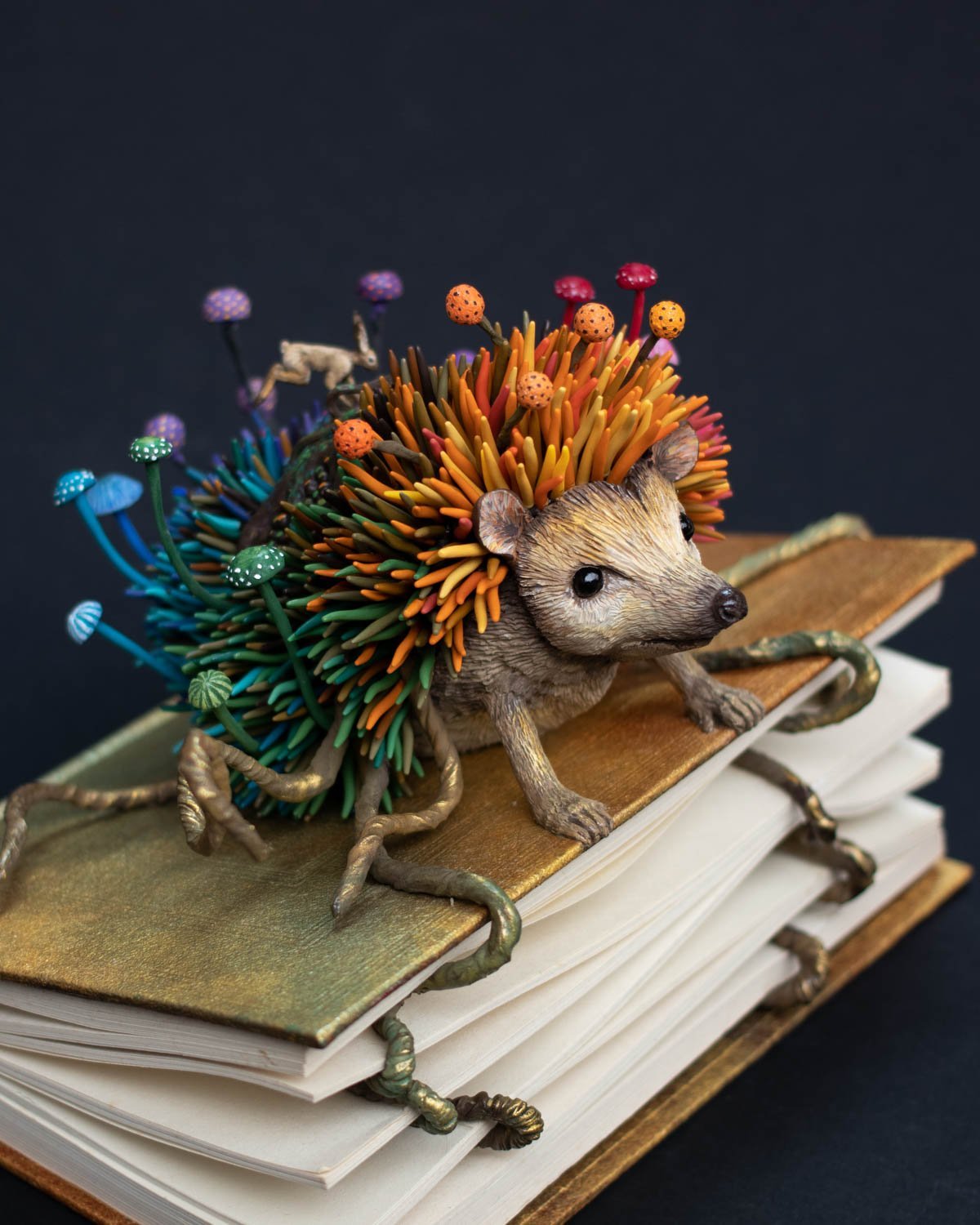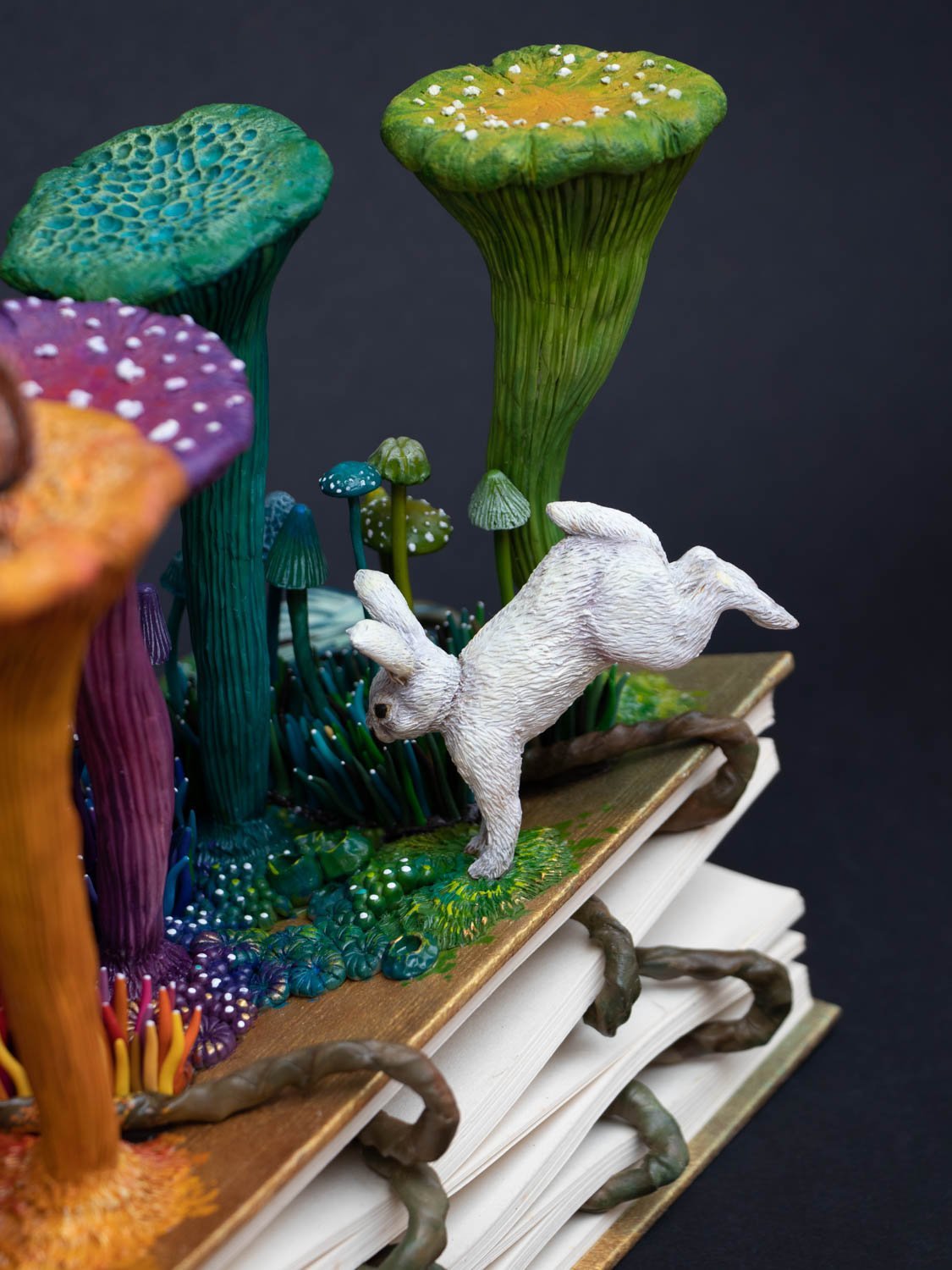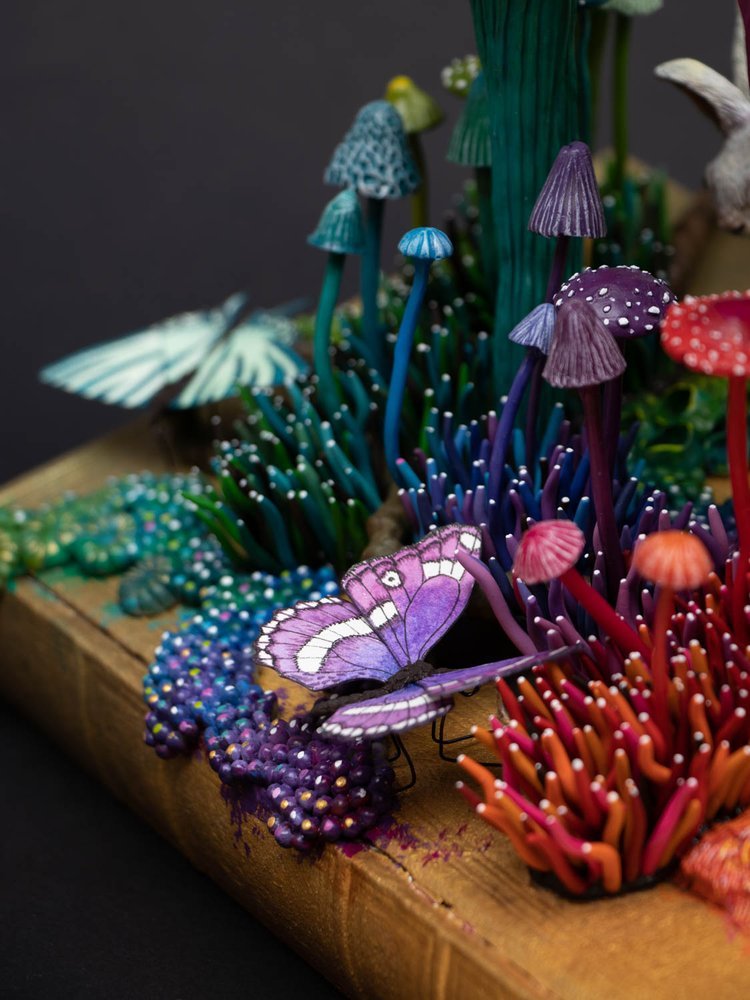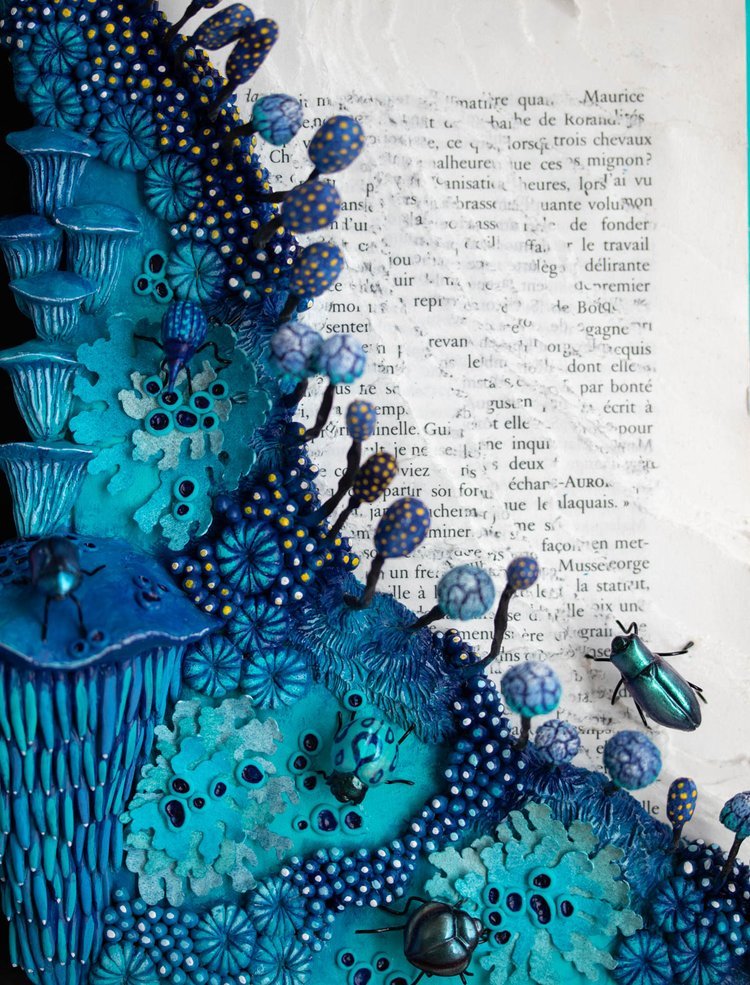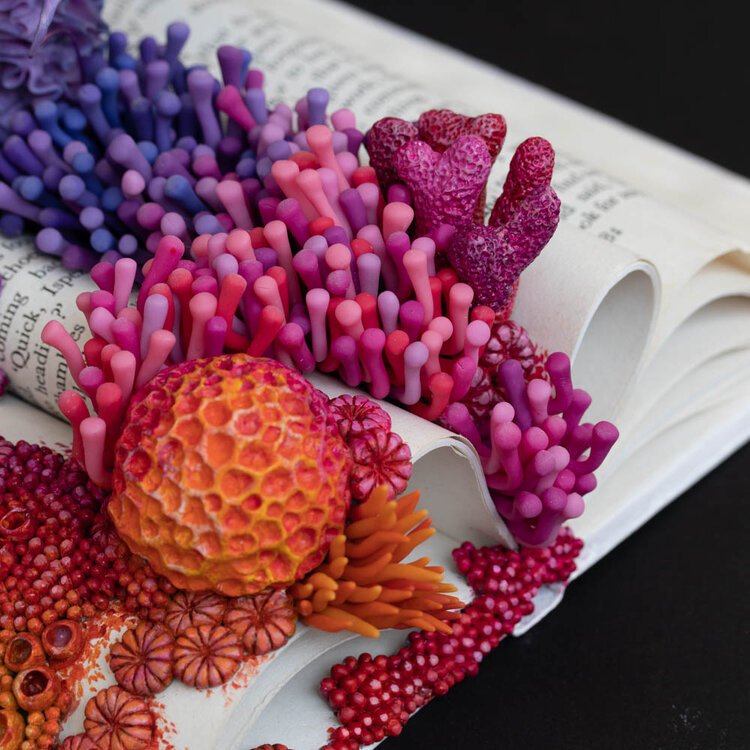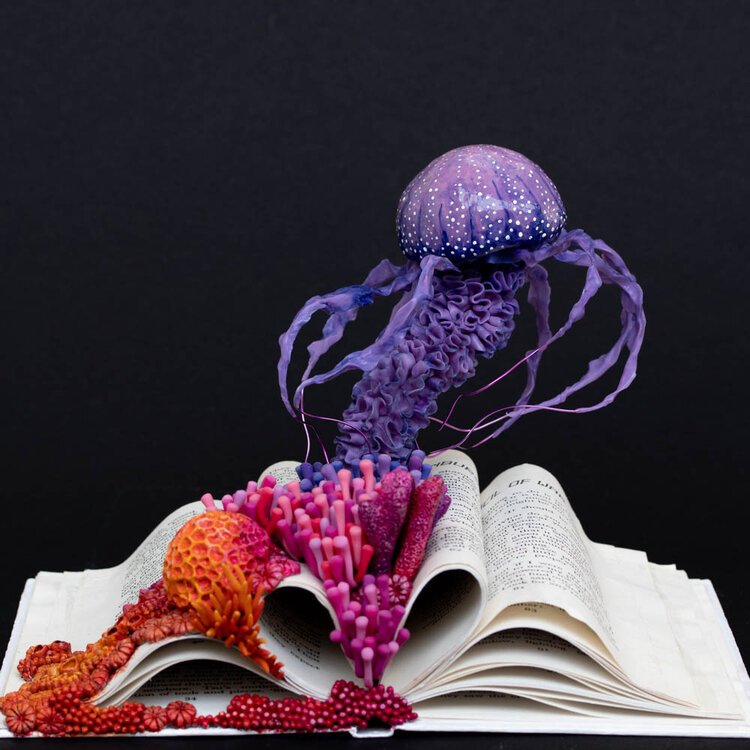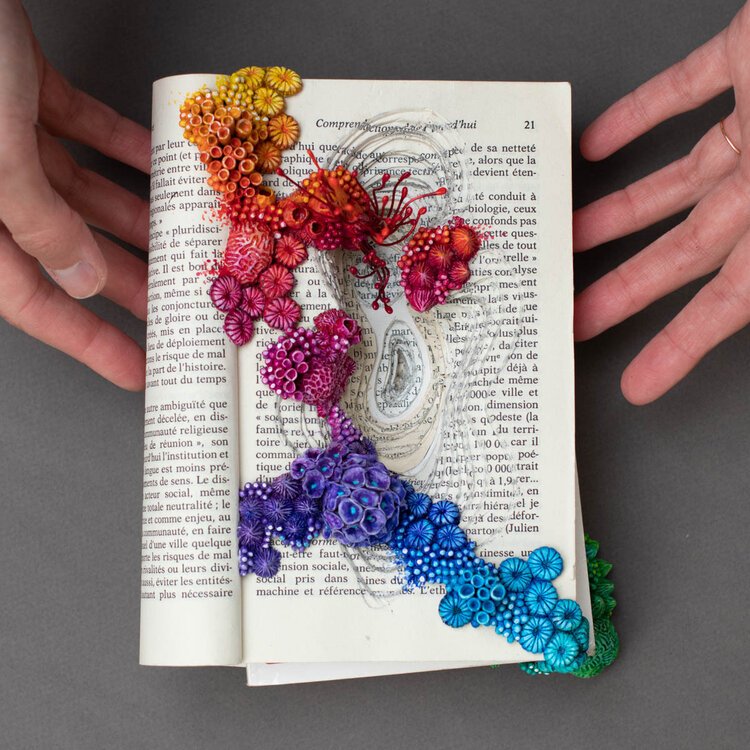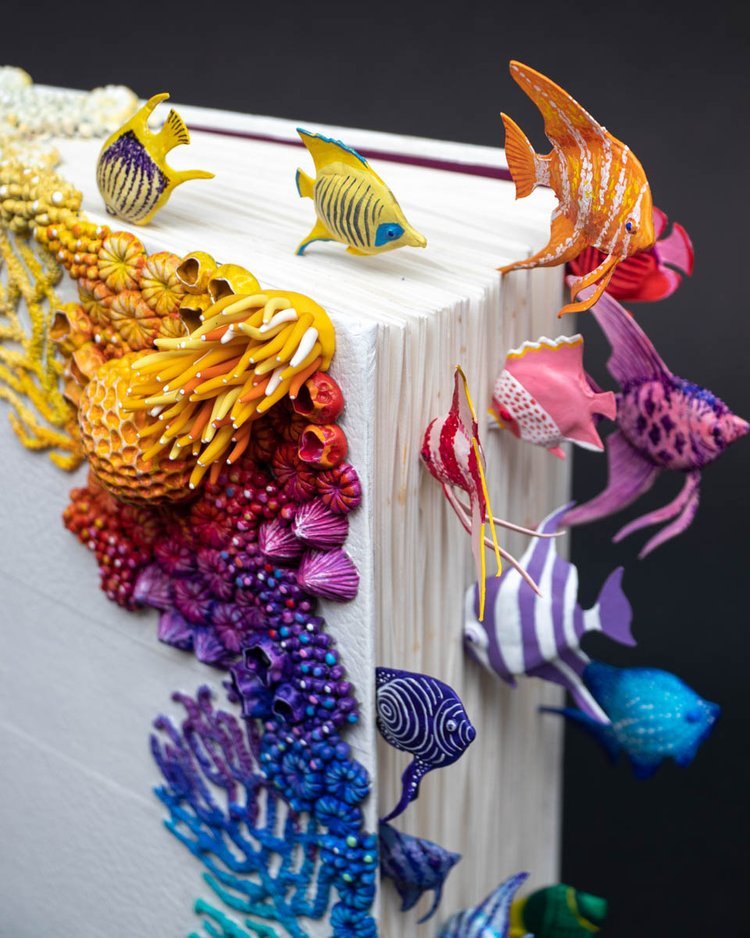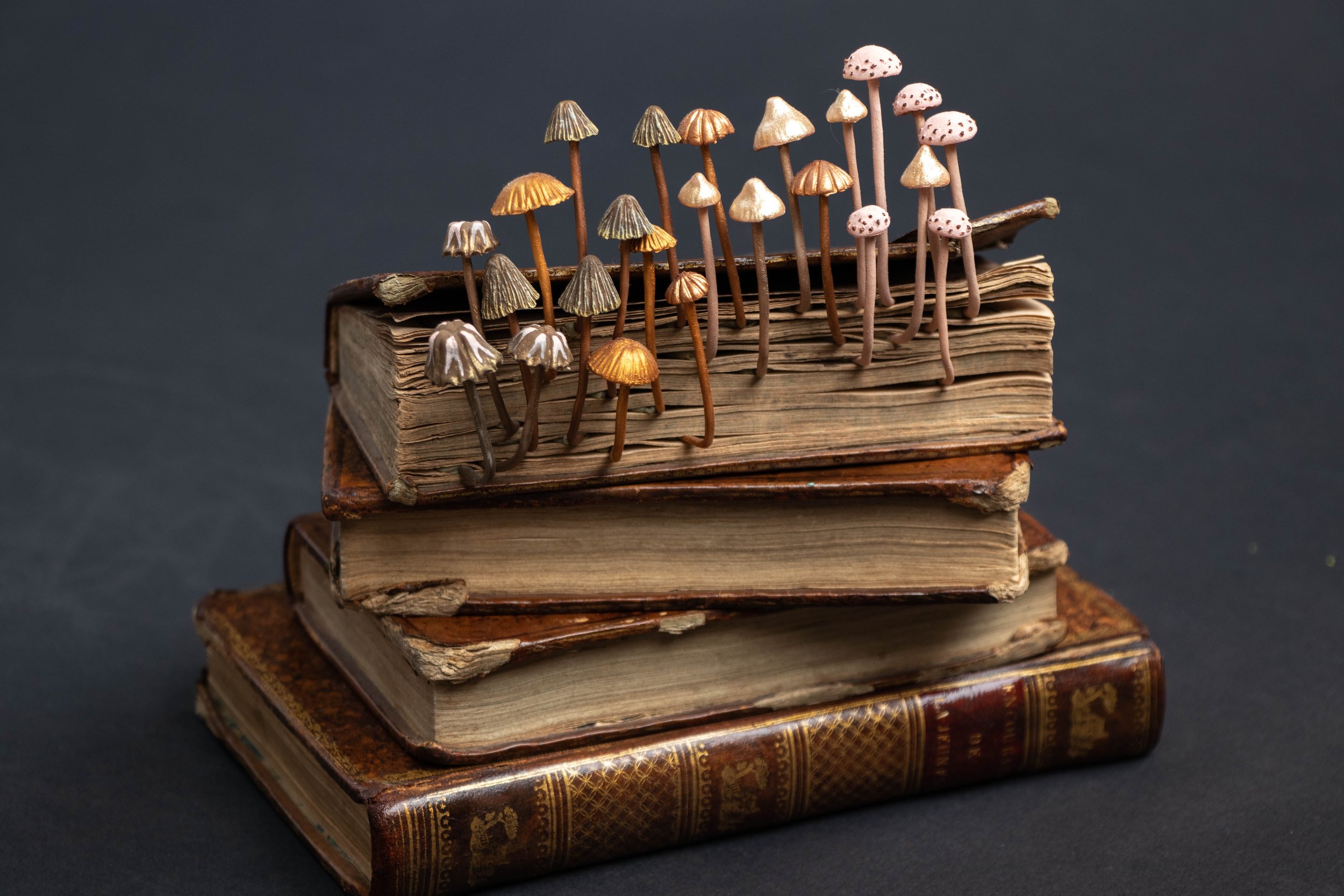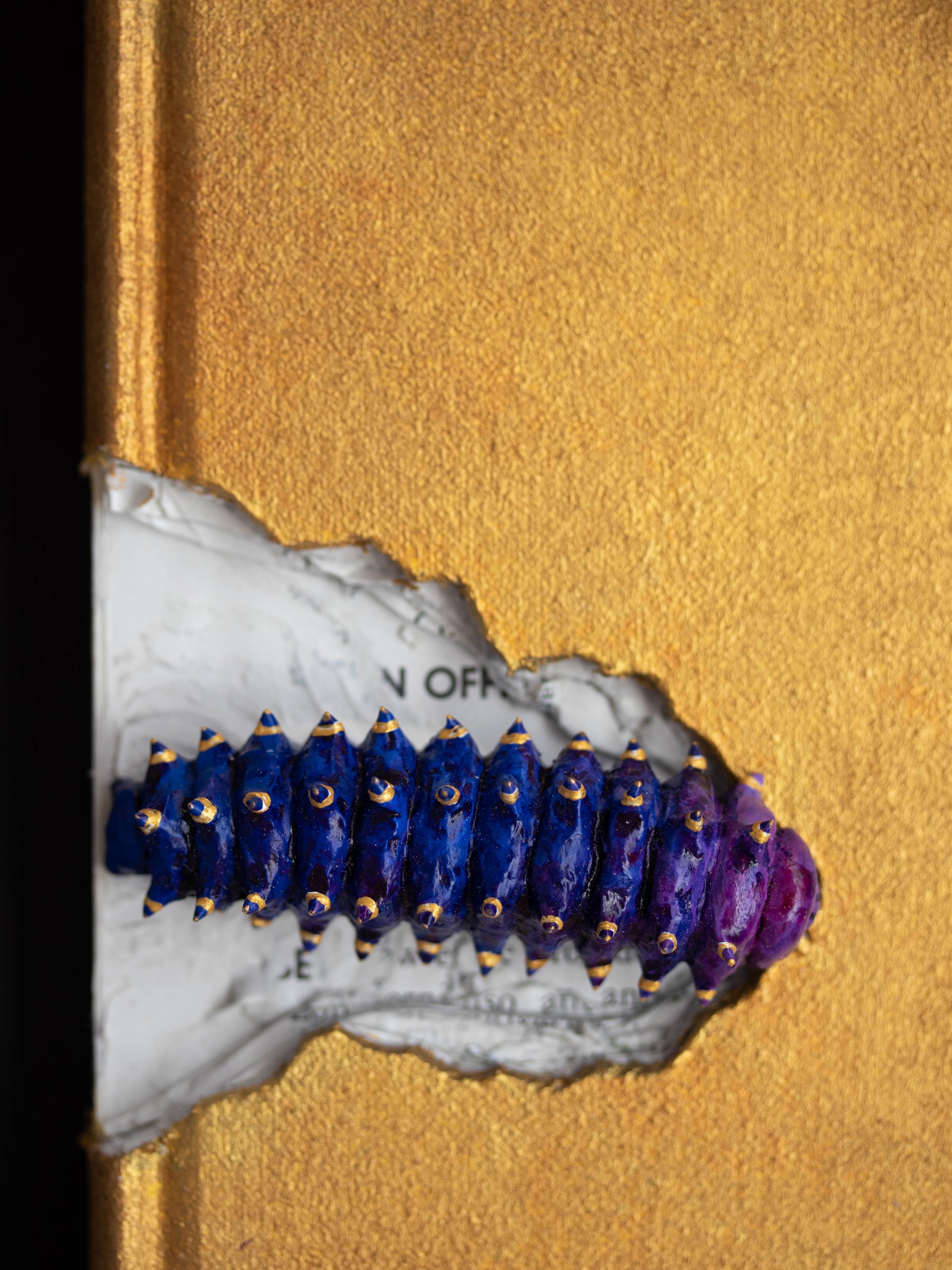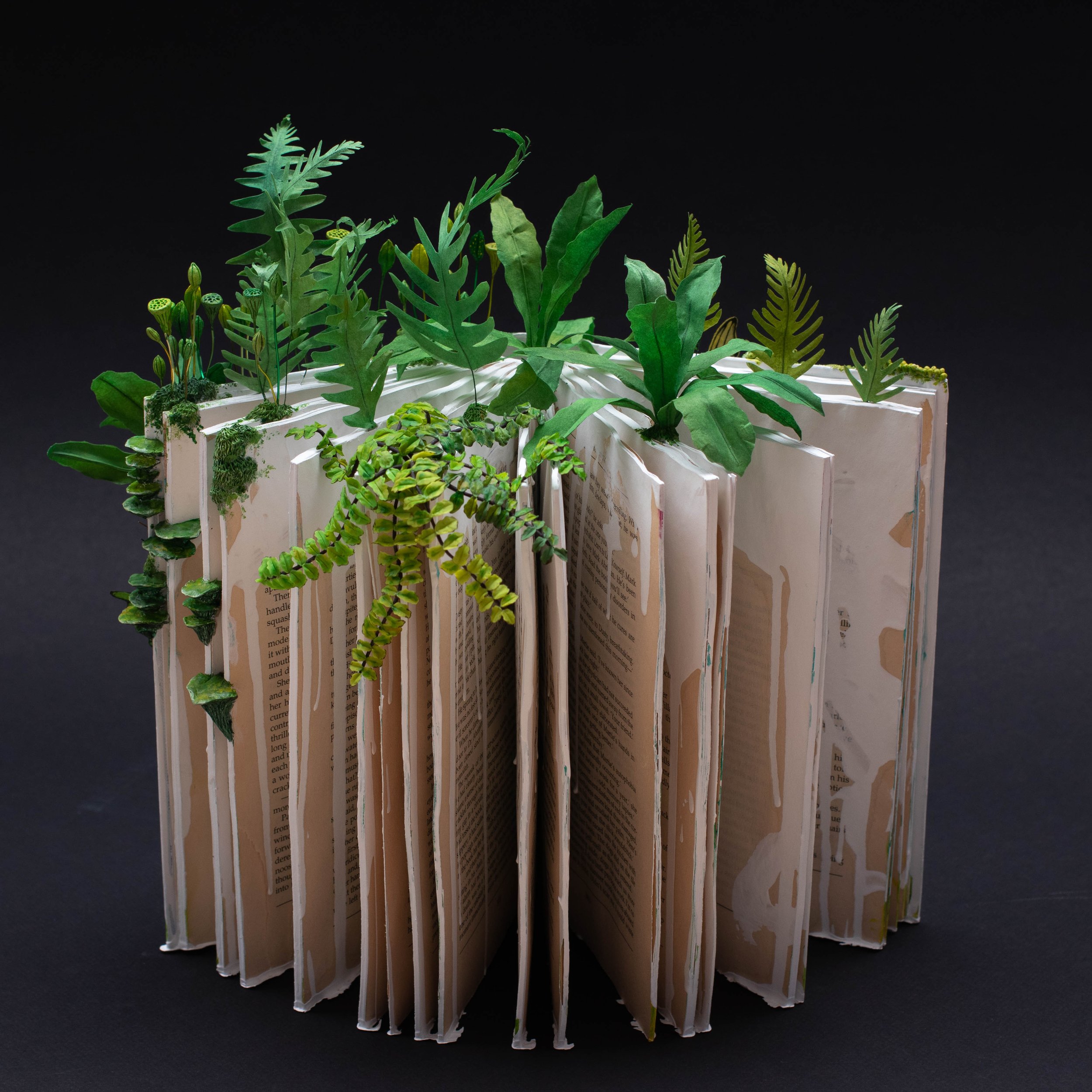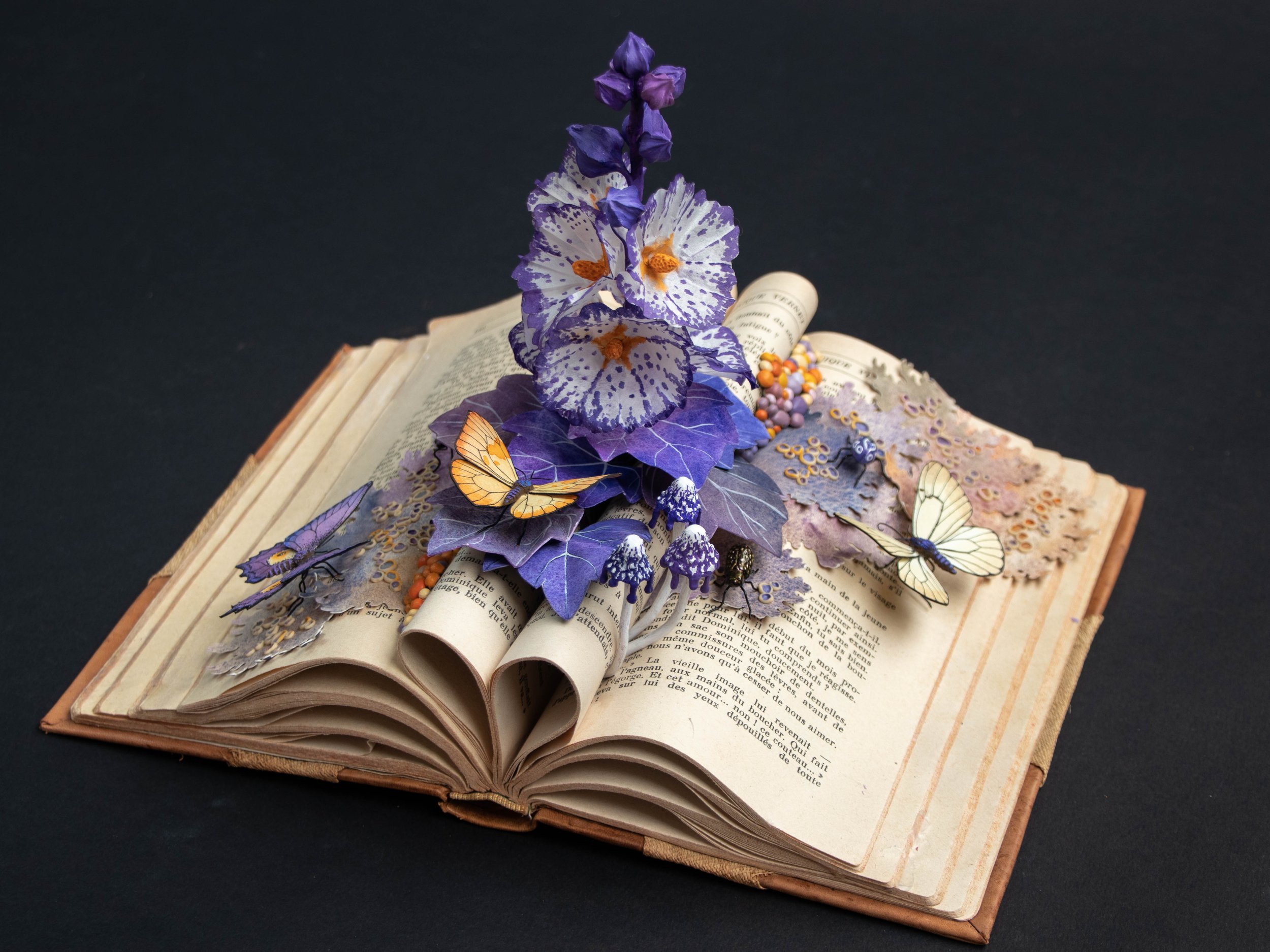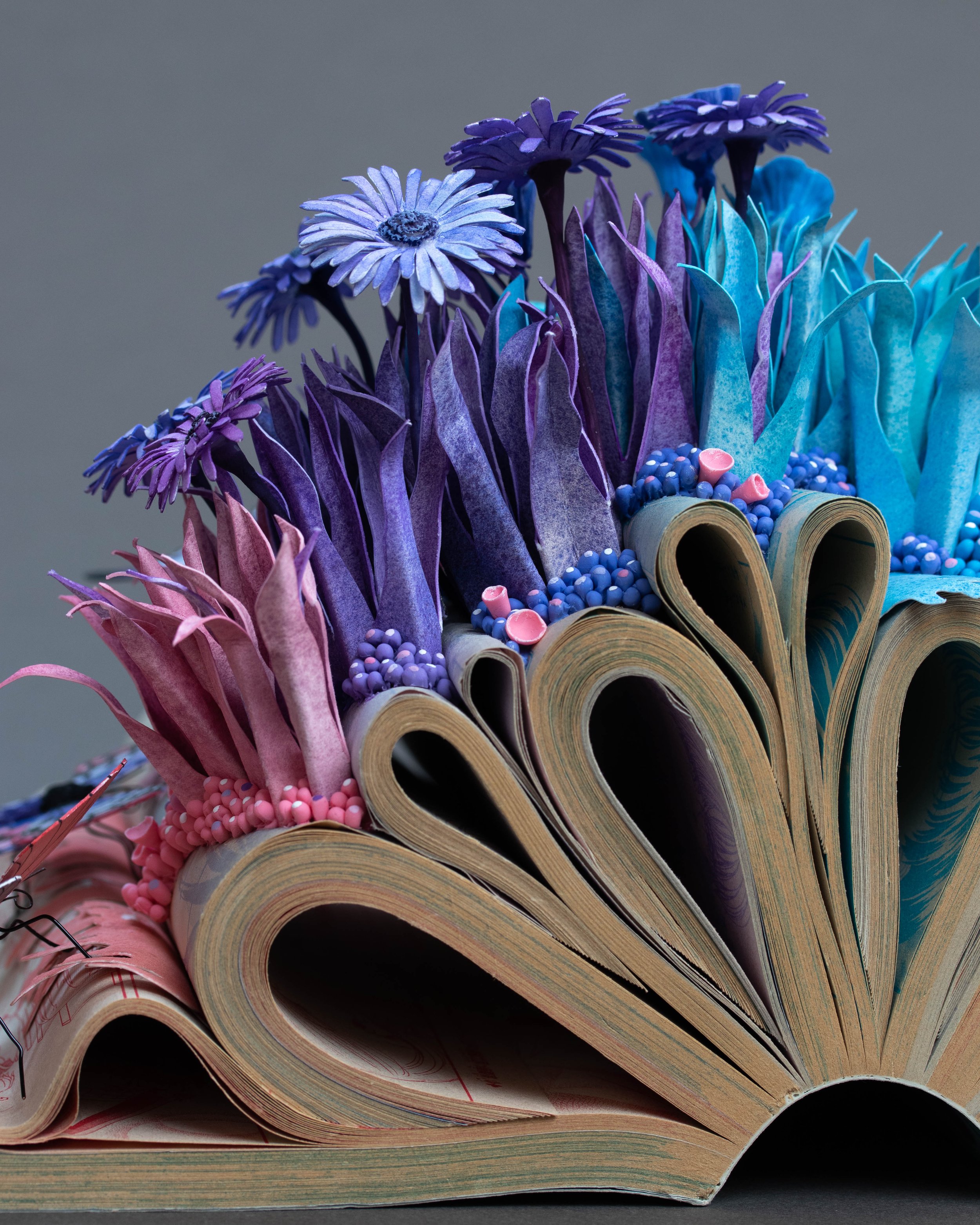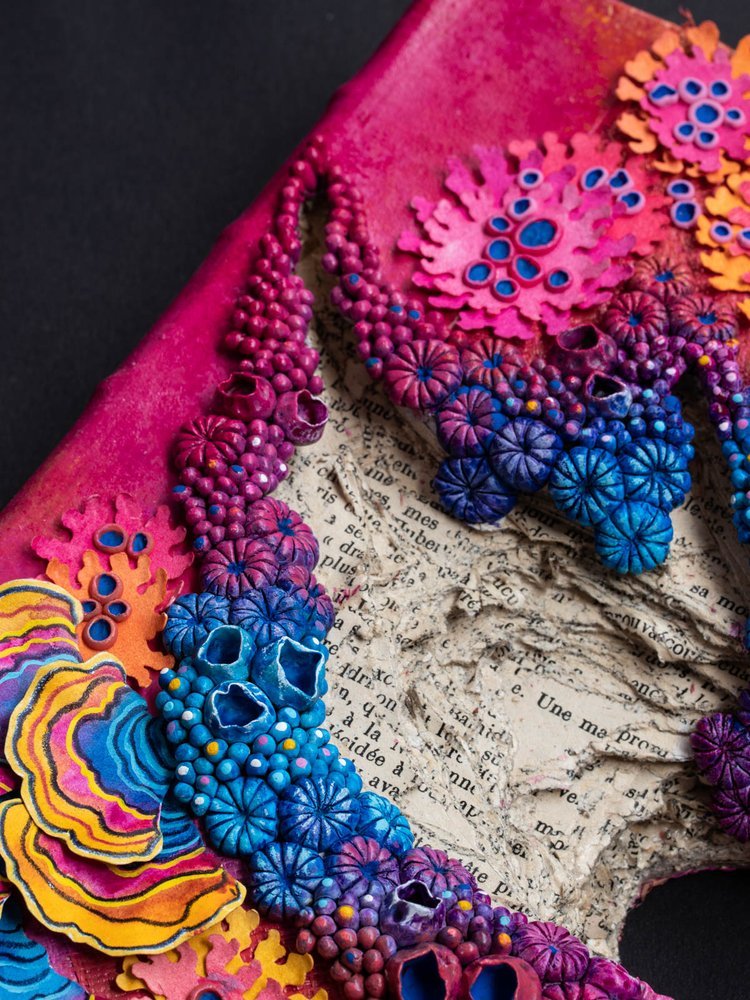Embracing the commonalities of art and environmentalism, European artist Stéphanie Kilgast breathes new life into discarded materials, upcycling them into captivating sculptures that serve as a colorful commentary on biodiversity. With a delicate eye for transforming trash into treasure, Kilgast’s art transcends the conventional, instilling a profound appreciation for the natural world in every piece. Her sculptures, intricately crafted from recycled plastic, aluminum cans, glass, and countless other retired materials, stand as powerful testaments to the resilience of Earth's ecosystems. Through her visionary work, Kilgast masterfully underscores the urgent need to protect our planet's diverse life forms, igniting a passion for environmental stewardship.
In her own words, “it’s a cheerful apocalypse.”
Note from the editor
On behalf of Blood Tree Literature, I am honored to feature the remarkable work of Stéphanie Kilgast for Issue 14. For obvious reasons, her collection “discarded objects,” an ongoing series of repurposed recyclables, strikes a chord with our current theme, Re:Build. I’ve personally been a follower and fan ever since the Instagram algorithm gods graced me with her page several years ago. I found myself irresistibly drawn towards the aesthetic, awestruck by the talent, and hooked by the message. So naturally, when tasked with scouting an artist whose work centralized on regrowth and renewal, that of Kilgast’s quickly came to mind.
BTL: Can you tell us about your journey as an artist and how you came to focus on upcycling in your work?
Kilgast: I used to sculpt miniature replicas of food, mostly for dollhouse collectors, but I would also turn these miniature foods into jewellery, earrings mostly. In 2014, a friend of mine told me about the impact of meat production on the environment which prompted me to drastically reduce my intake of meat until going vegetarian and then mostly vegan. This change and realization of our environmental impact pushed me to rethink my life and consumption habits as a whole and it was such a drastic change of mind and life that I had to talk about it somehow in my work. So in 2015, I decided to do a challenge where I would sculpt one miniature vegetable or fruit every day. The idea was to show the vast variety of edible plants and encourage people to eat less meat and talk about its environmental impact.
After that of course, I could not go back to doing just miniature food—I wanted to talk about the environment somehow. I first focused on trying to grow as an artist and quite literally did growing environments on top of wooden canvases until I suddenly had the idea to use trash to grow nature on top. And that made perfect sense! Since then, I’ve never stopped using manufactured objects to grow a replica of nature on top of them.
“Discarded Objects”
2017-current



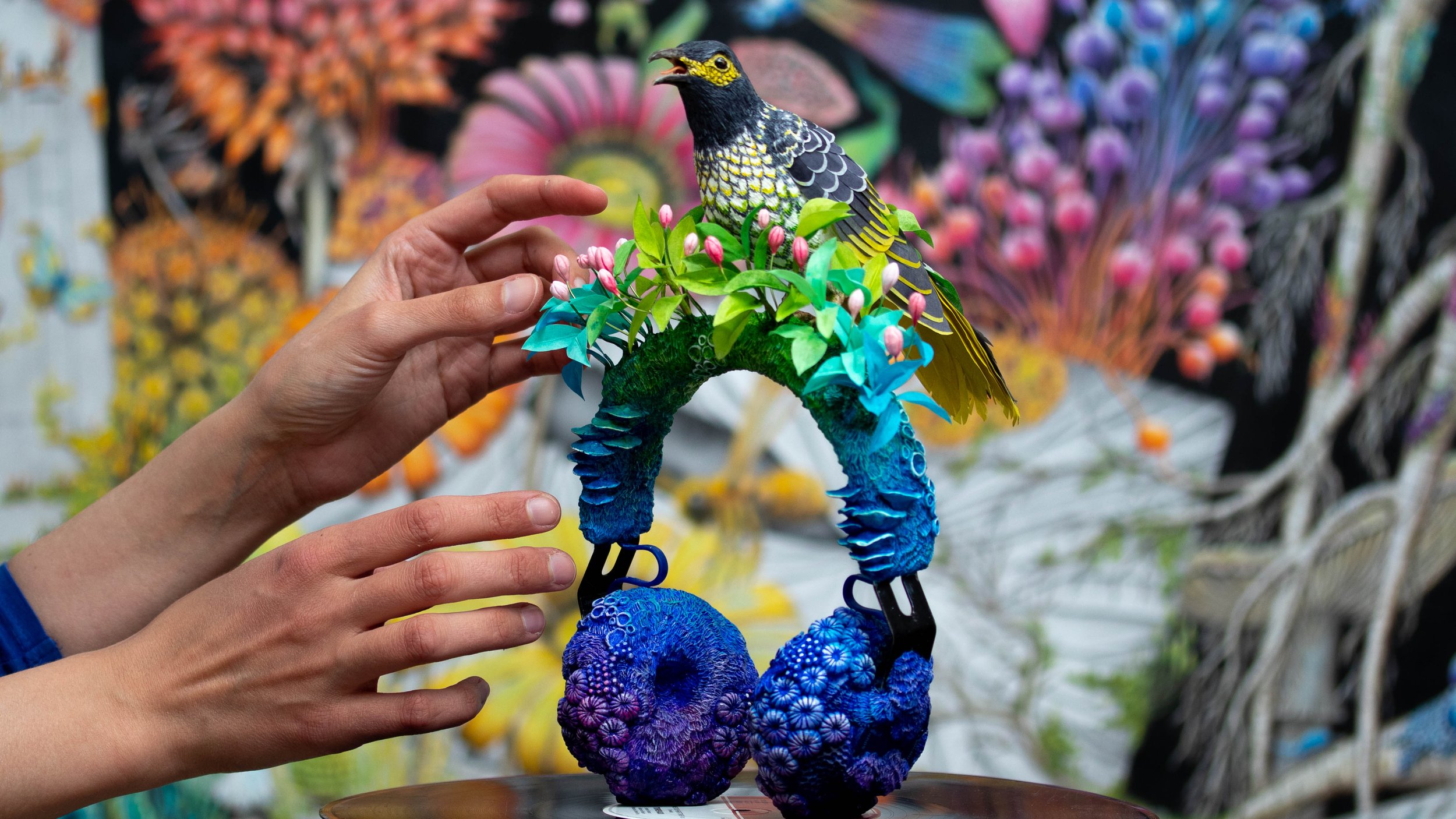
“Humanity produces new items every day. Some are useful, and some are decorative; the others are meant to protect the former. We keep piling new things over objects that already exist, getting rid of the old faster than ever. Every object production requires energy, time, and raw materials. Yet most of it is deemed trash almost as soon as it’s used. I take these wonders of modern industry and upcycle them into art.”
BTL: How do you source the discarded objects for your sculptures, and what criteria do you use to select the optimal “trash”?
Kilgast: I keep a rather big “trash drawer” where I keep objects that I find interesting. I like to thrift objects as well, as it can be fun to use. It adds a layer of meaning to the sculpture. Sometimes an idea starts with an object, but often it’s the other way around. I want to do a certain animal or plant and I’m looking for what object could work with it. The trash itself is usually my own, though I have friends who give me theirs and I have picked up trash outside. Everything gets washed before I use it in my work though!
Mojito, 2019
Epoxy clay, polymer clay, acrylics on tin can
BTL: This next question is inspired by your participation in advocacy programs. Can you discuss any collaborations or initiatives you have undertaken to promote the awareness of environmental consciousness through your art?
Kilgast: The most recent was an art challenge, For Planet Ocean. (Check out Stephanie’s contributions here.) I was one of two dozens of artists who hosted this challenge with weekly art prompts on Instagram in June 2023, and we collaborated with Project Seagrass. It’s a yearly challenge, but with Instagram going downhill, I don’t know yet how it’s going to be for 2024.
At the core, all my work is about the environmental impact of human activities, so I don’t necessarily search for specific collaborations. I see my work more as a nudge to make people rethink their habits. I’m also not in denial about it, I know my reach is fairly limited, but maybe I can reach and touch one hundred people, and the next artist will be able to reach one hundred as well, and that scientist with its book, a thousand, and so on. Expert talks and documentaries are usually what move me, but some humans are touched by art. So the idea is that the more people talk about the issues they find important, the better the chances of changing society as a whole.
Or at least, that’s how I justify doing what I do :)
“The gas mask is a representation of humanity at its worst, when our choices threaten the very world we live in, to the point we can’t breathe anymore.”
BREATHE, 2020
Epoxy clay, polymer clay, acrylics, wire, on gas mask
BTL: Have you encountered any misconceptions or challenges related to your medium, and how have you addressed them?
Kilgast: So many! Mixed media sculptures are very new in terms of art history, so there’s not much information out there on how to use all the modeling clays that exist. Everything is fairly recent and new territory. It’s not like oil paint that has been around for ages. On top of that, sculpting is really hard because you have to factor in structure, flexibility, strength, and weight. You can’t just sculpt anything, you have to think on how to approach a sculpture upfront and depending on which material you are using, the thinking differs.
B’S DEAD, 2019
Epoxy clay, polymer clay, wire, acrylics on artist’s own childhood barbie doll
“Knowledge?”
2020- (on-going)
a branch of “discarded objects”
“Our era has never had such free and easy access to knowledge. Yet it is also a time of fake news and bigotry. Knowledge seems to be discarded for stupidity or financial gains. Science is discredited by conspiracy theories. But without knowledge and the will to learn and understand, we can't form intelligent opinions and decisions. There is cognitive dissonance between our scientific advancement and how our societies function and evolve.”
Kilgast (CONT.): I also paint, and especially enjoy the use of watercolors, so I’ve been implementing the use of paper and watercolors in my work more and more. As a side note, I used to hang out with polymer clay artists who would do absolutely everything out of polymer clay and I remember doing a class of making flowers where I used paper. And one criticism was the use of paper, seemingly less resistant than the plastic of polymer clay. But in fact, we have no clue how plastic is going to last over time. Paper we have a good knowledge of, as we’ve been using it for centuries, so it’s actually a pretty sturdy material.
BTL: Congratulations on the launch of your coloring book! Ninety-six pages over six months of round-the-clock conceptualization and design is no small feat. How’s your hand holding up?
Kilgast: Thank you! My hand is alright. I was diagnosed with a neuralgia in my dominant arm, a nerve inflammation. In my case, it’s the nerve that starts just below the cervicals and goes down to my right hand. I do yoga everyday to compensate, but it’s always lingering and from my understanding, it’s for life! Yay!
I am honestly struggling more with burnout/depression these days. The coloring book was intense and I dived right back into work after it, which in hindsight was probably not the smartest idea. My cat also died last October and I’m still grieving, so now I’m an unmotivated lump and slowly trying to rest and be extra kind so I can get back into a more happy, creative self.
BTL: How do you envision your career evolving in 2024? Do you have any dreams, goals, or milestones you’re working towards?
Kilgast: Maybe it’s going to sound sad, but not really :) I feel like I’ve accomplished a lot already and I just hope I can continue to make art that is still interesting and relevant. I like my life how it is right now. I’ve been incredibly lucky, so I just hope this will continue!
One of my dreams/goals is to figure out an expression in paintings that I’m really satisfied with. Right now, I’m just going in all directions and I have no clue what I want to do, but I also know it’s a question of just creating paintings and doing them so I can figure it out. It’s just a frustrating phase as I have many ideas but I can’t do them all and I’m not sure which one to pursue. You can easily block yourself that way, so I have to keep reminding myself to just do and judge later.
Art is about patience after all.
To explore more of Kilgast’s work, you can dig into her “artsy archives”, shop available merchandise, or inquire about her tutorials and online classes here.



